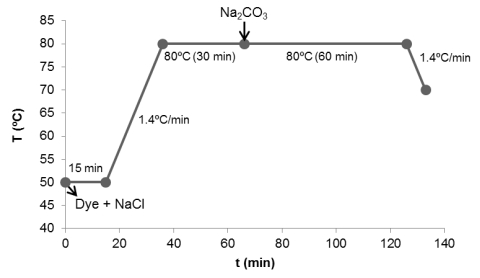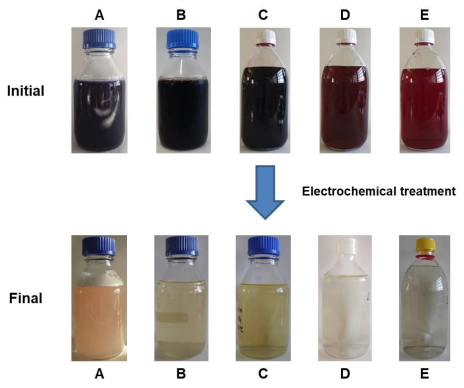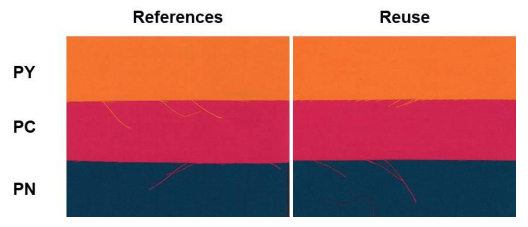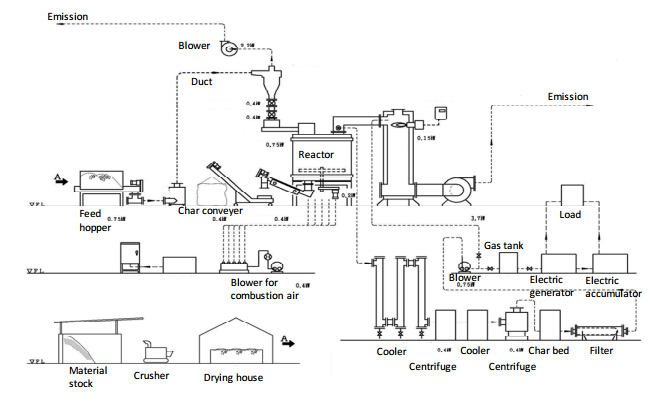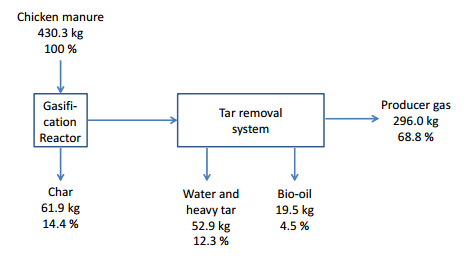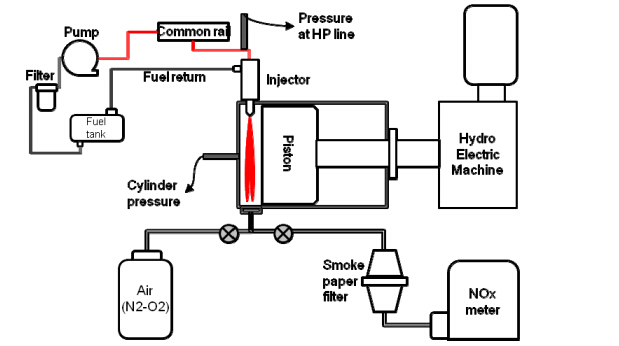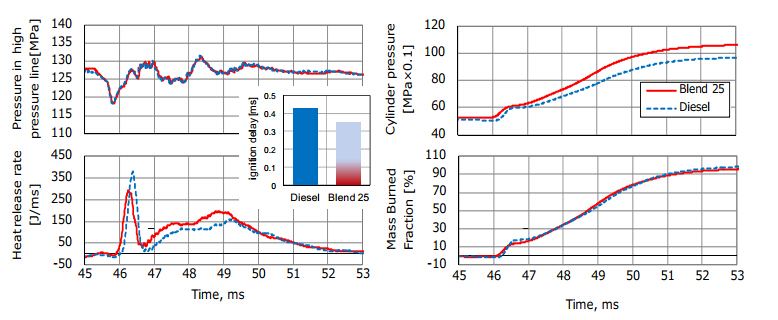1. Introduction
In 2030, industrial water consumption is expected to account for 22% of global water demand [1]. The water shortage and poor water quality in some industrial regions have caused the creation of new environmental policies focused on recycling and reuse of water [2].
Textile industry is one of the largest consumers of water due especially to their finishing processes such as dyeing and subsequent washing steps. High water consumption in textile industry has led to the treatment and reuse of its wastewater [2]. In addition to the presence residual dyes, textile wastewater is characterized by high organic and inorganic matters, turbidity, pH and in some cases, content of toxic chemicals [3].
Nowadays, biological [4,5,6] and physical-chemical processes [7,8] are used to remove dyes from textile wastewater. However, none of them enables water reuse in textile processes. On the other hand, advanced oxidation processes such as photo-Fenton [9] and photocatalytic [10] have been also studied. Although these methods provided high color removal, the treatment cost is their main limitation.
Electrochemical processes have also been tested to remove dyes from textile effluents. The process occurs via two pathways: direct anodic oxidation or indirect oxidation. In the direct oxidation, the electrolysis takes place directly on the anode whereas the base of the indirect oxidation is the electrogeneration in situ of the oxidant species that can degrade the pollutants [11]. The main advantage of the electrochemical treatment is that the electron is the only reagent required for the degradation of the pollutants.
Reactive dyes are the most consumed dyes in the textile industry. These dyes have high washing fastness as they react chemically with the fiber. However, part of reactive dyes can also react with water, generating the hydrolyzed form of the dye that cannot react with the fiber. Then, the hydrolyzed dyes are discharged with the wastewater [12]. To increase the affinity of the dye with the fiber, high amount of salt is added in the dyeing process. Between 0.6 and 0.8 kg of salt/kg of fiber is required, depending on the dye structure, shade and dyeing method [13]. As a result, the wastewater generated in the dyeing process with reactive dyes is characterized by high salt content. This represents an important disadvantage since there is no treatment that enables to destroy the salts. Currently, the treatments used for the removal of salts are based on obtaining a concentrate that must be subsequently removed as a waste. Therefore, wastewater from reactive dyeing process is suitable to be treated by means of electrochemical treatment. No chemicals should be added, as the treatment uses the salts already present in the effluent to generate the oxidant species [14] which destroy the chromophore groups of the dyes, according to the following reactions [15]:
|
$
2{\rm{C}}{{\rm{l}}^ - } \to {\rm{C}}{{\rm{l}}_{2({\rm{aq}})}} + 2{{\rm{e}}^ - }
$
|
(1)
|
|
$
{\rm{C}}{{\rm{l}}_{2({\rm{aq}})}} + {{\rm{H}}_2}{\rm{O}} \to {\rm{Cl}}{{\rm{O}}^ - } + {\rm{C}}{{\rm{l}}^ - } + 2{{\rm{H}}^ + }
$
|
(2)
|
|
$
{\rm{Dye}} + {\rm{Cl}}{{\rm{O}}^ - } \to {\rm{dye}}\;{\rm{fragments}}
$
|
(3)
|
According to the reaction (2), the chloride ion is obtained again at the end of the process and can be oxidized to reinitiate a new process. Some residual oxidants can remain in solution after the oxidation of dyes. The UV irradiation is applied to achieve its removal, providing a saline solution able to be reused in new dyeing processes.
Taking these considerations into account, the aim of this work is to study the feasibility of the electrochemical techniques combined with UV to treat industrial effluents from the dyeing process with reactive dyes. Once the effluents have been decolorized by electrochemical treatment, are reused in new cotton dyeings. Finally, fabrics dyed with the reused effluent are evaluated with respect to references carried out with softened tap water.
2. Experimental
2.1. Reagents
Three reactive dyes (DyeStar) were selected for the study of effluent reuse: Procion Yellow H-EXL (PY), Procion Crimson H-EXL (PC) and Procion Navy H-EXL (PN). Table 1 shows the description of the dyes used in this study [12]. Sodium carbonate (Sigma-Aldrich) and sodium chloride (Scharlab) were used in the dyeing procedure. Finally, before the dyeing process, pH of treated effluents was adjusted with solutions of NaOH and HCl.
Table 1. Description of the dyes used in this study.
| Dye |
C.I. name |
Chromophore |
Reactive group |
| PY |
Reactive Yellow 138:1 |
Diazo |
Monoclorotriazinc |
| PC |
Reactive Red 231 |
Diazo |
Monoclorotriazinc |
| PN |
Non-registered |
Diazo |
Monoclorotriazinc |
2.2. Wastewater
Five industrial effluents supplied by a textile mill were selected to be treated. They were collected from the jet dyeing process.
2.3. Electrochemical treatment assisted by UV
The effluents (0.5 L for each experiment) were treated in an undividable electrolytic cell. In all cases, the intensity was set at 10 A. The electrodes were made of Ti/PtOx, with 44.8 cm2 of active surface. The UV radiation was performed with a Philips TUV lamp PL-S UV-C at 254 nm and 9 watts.
2.4. Effluent reuse
Before reusing the treated effluent, a reconstitution step must be performed. The effluent reconstitution is carried out in the following steps:
● Carbonates and bicarbonates are removed by acid addition and stripping.
● Neutralization of the effluent by alkali addition.
● Residual oxidants removal with UV irradiation.
Once the bath is reconstituted, the concentration of chloride ion should be quantified in order to determine to amount to be added in the reuse dyeing process.
The reuse dyeing tests were performed in a laboratory Ti-Color dyeing machine (Integrated Color Line) under the following conditions: 10 g of cotton fabric, dye concentration 3% o.w.f (over weight of fiber), liquor ratio 1:10 (1 g fiber/10 mL dye bath), 80 g·L–1 of NaCl and 16 g·L–1 of Na2CO3. The dyeing method is shown in Figure 1.
After the dyeing process, a washing process in nine steps was carried out:
● 1st–3rd: Cleaning with softened tap water at 50 ℃ during 10 min.
● 4th: Soap cleaning with 2 g/L of COTEMOLL TLTR at 95 ℃ during 15 min.
● 5th: Cleaning with softened tap water.
● 6th: Soap cleaning
● 7th–9th: Cleaning with softened tap water.
All the experiments were performed at liquor ratio 1:10.
2.5. Analytical methods and measurements
COD was determined according to the methods recommended by American Public Health Association [16]. The COD removal was calculated using the following equation:
|
$
COD\;removal\left( \% \right) = \frac{{\left( {CO{D_0} - CO{D_f}} \right)}}{{CO{D_0}}} \cdot 100
$
|
where COD0 is the value before the electrochemical treatment and CODf is the value after the electrochemical treatment.
The conductivity and pH were determined using a Conductimeter GLP 31 (CRISON) and a pHmeter GLP 21 (CRISON) respectively [16].
Color removal was calculated from the initial absorbance (A0) and the absorbance at the end of the treatment (Af) using the following equation:
|
$
Colour\;removal\left( \% \right) = \frac{{\left( {{A_0} - {A_f}} \right)}}{{{A_0}}} \cdot 100
$
|
Absorbance was determined with a UV–visible spectrophotometer (UV-2401, Shimadzu Corporation) at the maximum wavelength of the sample visible spectrum.
The determination of Cl– was carried out with Ion Chromatography ISC-1000 (Dionex) [16].
Finally, the quality of dyed fabrics was determined in conformity with the Standard UNE-EN ISO 105-J03 [17]. Total color differences (DECMC(l:c)) were calculated from lightness (DL*), chroma (DC*) and Hue (DH*) using the following equation:
|
$
{\rm{D}}{{\rm{E}}_{{\rm{CMC}}({\rm{l}}:{\rm{c}})}} = {\rm{ }}{[{\left( {{\rm{DL}}*/{\rm{l}}{{\rm{S}}_{\rm{L}}}} \right)^2} + {\left( {{\rm{DC}}{*_{{\rm{ab}}}}/{\rm{c}}{{\rm{S}}_{\rm{c}}}} \right)^2} + {\left( {{\rm{DH}}{*_{{\rm{ab}}}}/{{\rm{S}}_{\rm{H}}}} \right)^2}]^{1/2}}
$
|
For the measurements, a Macbeth Color Eye 7000A spectrophotometer was used. They were performed with the standard illuminant D65/10˚. In general, a dyeing is considered into the acceptance range when the DECMC(l:c) value with respect to a reference sample is lower than 1.
3. Results and discussion
3.1. Wastewater characterization
Before the electrochemical treatment, the effluents were characterized. The characteristics of each effluent are shown in Table 2.
Table 2. Characterization of samples of effluents collected from Jet process.
| Initial Effluent |
COD (mg·L–1) |
Conductivity (mS/cm) |
pH |
Cl– (mg·L–1) |
λmax |
| A |
3518.9 |
57.5 |
10.9 |
24203.7 |
543.5 |
| B |
1515.4 |
83.1 |
10.6 |
66223.2 |
588.5 |
| C |
1099.0 |
88.3 |
10.7 |
39049.9 |
511.0 |
| D |
2450.5 |
129.0 |
10.5 |
69064.6 |
427.0 |
| E |
1811.0 |
124.1 |
10.7 |
65952.2 |
519.0 |
As can be observed in Table 2, the effluents from Jet dyeing process presented alkaline pH and high conductivity. In addition, the concentrations of Cl– are between 24 and 70 g·L–1, that represents a concentration up to 115 g/L of NaCl.
3.2. Electrochemical treatment
The efficiency of the electrochemical technique applied to treat textile effluents from Jet dyeing processes was determined by characterizing of treated effluent (Table 3).
Table 3. Characterization of effluents from Jet process after 10 min of electrochemical treatment.
| Treated Effluent |
Conductivity (mS/cm) |
pH |
COD removal (%) |
Color removal (%) |
| A |
63.0 |
10.6 |
11.9 |
100 |
| B |
77.7 |
10.2 |
0.0 |
100 |
| C |
87.1 |
10.7 |
0.0 |
100 |
| D |
128.1 |
10.7 |
51.4 |
100 |
| E |
120.6 |
11.2 |
8.3 |
100 |
In all cases, the effluents were totally discolored after 10 min. of electrochemical treatment (Figure 2).
Regarding COD values, the reduction of organic matter did not follow a clear trend, as COD removal rates up to 51% were obtained. A full mineralization could be achieved with a longer treatment time [18]. However, other methods, such as biological treatments, are more efficient for this purpose. The electrochemical treatment is able to break down the poorly biodegradable organic molecules such as dyes into dye fragments, improving the biodegradability of the effluents [19]. Consequently, a full mineralization of the effluents could be achieved with a combination of electrochemical processes with conventional biological treatments.
At the end of the treatment, pH and conductivity values remained very similar to the initial ones. In some cases, these values are almost constant which evidences that the electrochemical treatment has little influence on them.
The concentration of residual oxidants at the end of the treatment is a key factor when the electrochemical treatment is carried out for reuse since they must be removed before reusing the treated effluent. Consequently, the treatment should be carried out at intensity high enough to achieve a good discoloration, but as lower as possible in order to avoid the generation of residual oxidants.
The optimization of the residual oxidants at the end of the treatment was carried out with the effluent C. It was treated at 2 A and 10 A, and the residual oxidants were determined in both cases. Results are presented in Table 4.
Table 4. Results obtained in the treatment of effluent C at different values of intensity and time of treatment.
| Intensity (A) |
Treatment time (min) |
Color removal (%) |
Residual oxidants (mg·L–1) |
| 2 |
30 |
93 |
0 |
| 2 |
60 |
97 |
2 |
| 10 |
10 |
100 |
2000 |
As it was expected, decreasing the intensity resulted in increasing the time required to decolorize the effluent. However, the concentration of residual oxidants was also significantly reduced. On the other hand, the two trials at 2 A evidence that the first 30 minutes of treatment provided very high discoloration rate (93%) whereas in the last 30 minutes the color removal increased only in 4% (97% total color removal). Thus, when the time of treatment (and the power consumption) is increased twice, the color removal yield is only increased in 4%.
Taking into account these results, it was decided to carry out the reuse tests with the effluent C treated for 30 minutes at 2 A.
3.3. Effluent reuse
On the bases of our previous studies, the reuse process was carried out with 70% of decolored effluent, which also contains 64% of residual salt.
Cotton samples dyed with the 70% uncolored effluent was evaluated with respect to reference dyeings performed with decalcified water. Their chromatic coordinates and color differences (DECMC(2:1)) are shown in Table 5.
Table 5. Chromatic coordinates and color differences values.
| Dye |
DH |
DL |
DC |
DECMC(2:1) |
| PC |
–0.55 |
0.37 |
–0.37 |
0.76 |
| PN |
–0.11 |
0.22 |
–0.33 |
0.41 |
| PY |
–0.58 |
–0.29 |
0.67 |
0.93 |
It can be seen that DECMC(2:1) values, which reflects the human eye perception, were lower than 1, the tolerance limit generally accepted by the textile industry (Figure 3).
3.4. Advantages of the industrial implementation of the process
The combination of electrochemical technique with UV irradiation to treat and reuse textile wastewater has clear environmental and economic advantages.
According to the dyeing method, 10 L of water and 0.5 kg of salt are required to dye 1 kg of textile product. Consequently, the reuse of 70% of water and 64% of salt in the dyeing process result in a saving of 7 L of water and 0.5 kg of salt per kilogram of textile product.
A medium size textile mill can produce from 1–5 Tm of reactive dyed fabric per day. This would imply the generation of 10–50 m3 of exhausted dyebaths to be treated. The implementation of combined electrochemical and UV treatment will enable the company to save 7–35 m3 water and 0.5–2.5 Tm salt per day. In addition to the production process, the advantages on the wastewater treatment must also be considered. Thus, the reuse of the more colored effluents facilitates the treatment of the wastewater generated in other processes. Moreover, the conductivity of the discharged wastewater is reduced as a consequence of salt reuse. All this implies a reduction of discharge taxes and a better accomplishment of regulations.
As a result of the promising achievements obtained in this study, an industrial system combining electrochemical and UV treatment was designed to treat 4 m3/h in a textile mill in order to evaluate the industrial implementation of the technology.
4. Conclusions
Textile effluents collected from industrial reactive exhausted dyebaths were treated by means of an electrochemical treatment at 10 A. In all cases, the treatment provided 100% color removal.
The residual oxidants were removed by means of UV irradiation. To reduce this step, the optimization of the electrochemical treatment was carried out and it was found that when the treatment is performed at 2 A, 93% color removal is obtained and the concentration of residual oxidants is minimized.
The effluent reuse study showed that 70% of uncolored effluents could be reused in new dyeing processes. Simultaneously, the reuse of 64% of salt was also achieved.
The results obtained in this study are promising for the textile industry since this sector consumes large amounts of water. The combined electrochemical and UV treatment enables the reuse of water and salt, which represents a significant advantage from both the environmental and economical points of view.
Acknowledgment
This project is co-funded by the European Union within the CIP Eco-Innovation initiative of the Competitiveness and Innovation Framework Programme, CIP: ECUVal project (ECO/13/630452). For more information: www.ecuval.eu.
Conflict of interest
The authors declare there is no conflict of interest.









 DownLoad:
DownLoad: 